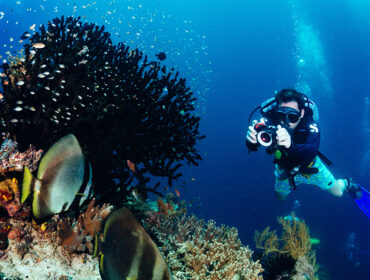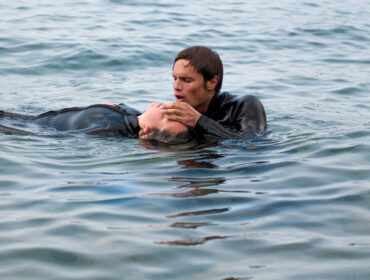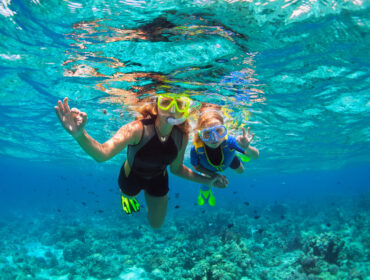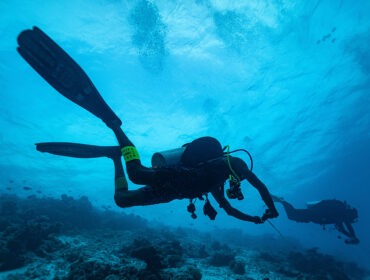Have you ever been told by a guide to swim in a certain direction for a specific distance? Have you glazed over on the distance part and just hoped you would run into the object eventually? Until we all have underwater GPS units, we need to be able to figure out how far we go with each kick.
You’ll want to dedicate at least one dive to learning how far each kick takes you. Here’s a list of what you’ll need:
- A long rope. We recommend 100 feet because it is easily available and makes the math a little easier.
- Your regular gear setup and a full tank.
- A slate to write down your information while underwater.
- Weights to securely hold down each end of the rope.
First, secure the rope. If you have access to something stationary like a dock, that makes for the perfect item to tie off at least one end to. You want to make sure both ends are as secure as possible because some people have the tendency to pull the rope while doing this exercise.
It may be easier if you can keep your rope close to the bottom (not always possible) because it’s easier to identify if the rope is relatively horizontal in relation to the bottom as compared to in free water. Try to setup your rope parallel to any current, although it is best to do this in an area where currents are mild.
Now that your rope is secure, swim normally from one end to the other while counting your fin kicks. Count from when the fin is at the top of your kick, down through the kick and back up to the top of the cycle.
When you reach the end of your rope, write down the number of fin kicks you did on your slate. Repeat this several times in a natural manner. Some people do this exercise at double their normal speed because they are task-focused, but this is not a realistic representation of how you would normally dive.
Do this at least twice so you can average between swimming into the current with swimming with the current. The more samples the better and you are more likely to relax the more times you do the test. When you have enough samples or are low on air, end the exercise.
Now, take the average of all of your samples and divide that number into the length of your rope. If you averaged 13 kicks to go 100 feet along the rope, that means each fin kick you make averages just over seven and a half feet in distance travelled. The next time a guide tells you to swim 60 feet, you now know to count roughly eight kick cycles.
Keep in mind that these are averages, and changes to gear (especially fins and exposure protection) and currents can have an impact on this number.




